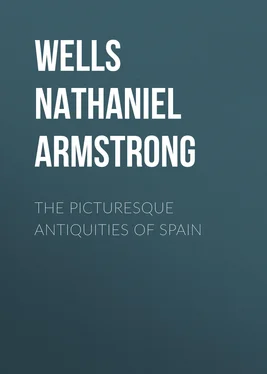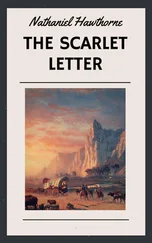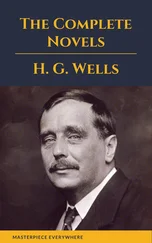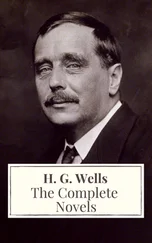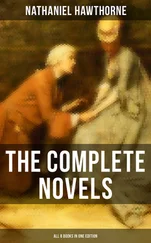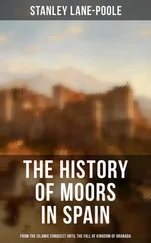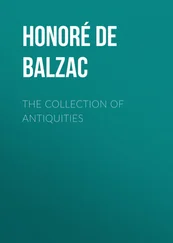Nathaniel Wells - The Picturesque Antiquities of Spain
Здесь есть возможность читать онлайн «Nathaniel Wells - The Picturesque Antiquities of Spain» — ознакомительный отрывок электронной книги совершенно бесплатно, а после прочтения отрывка купить полную версию. В некоторых случаях можно слушать аудио, скачать через торрент в формате fb2 и присутствует краткое содержание. Жанр: foreign_antique, foreign_home, visual_arts, на английском языке. Описание произведения, (предисловие) а так же отзывы посетителей доступны на портале библиотеки ЛибКат.
- Название:The Picturesque Antiquities of Spain
- Автор:
- Жанр:
- Год:неизвестен
- ISBN:нет данных
- Рейтинг книги:3 / 5. Голосов: 1
-
Избранное:Добавить в избранное
- Отзывы:
-
Ваша оценка:
- 60
- 1
- 2
- 3
- 4
- 5
The Picturesque Antiquities of Spain: краткое содержание, описание и аннотация
Предлагаем к чтению аннотацию, описание, краткое содержание или предисловие (зависит от того, что написал сам автор книги «The Picturesque Antiquities of Spain»). Если вы не нашли необходимую информацию о книге — напишите в комментариях, мы постараемся отыскать её.
The Picturesque Antiquities of Spain — читать онлайн ознакомительный отрывок
Ниже представлен текст книги, разбитый по страницам. Система сохранения места последней прочитанной страницы, позволяет с удобством читать онлайн бесплатно книгу «The Picturesque Antiquities of Spain», без необходимости каждый раз заново искать на чём Вы остановились. Поставьте закладку, и сможете в любой момент перейти на страницу, на которой закончили чтение.
Интервал:
Закладка:
This edifice, or at least the greater portion of it, dates from the thirteenth century. The first stone was laid by Saint Ferdinand, on the 20th of July 1221. Ferdinand had just been proclaimed king by his mother Doña Berenguela, who had invested him with his sword at the royal convent of the Huelgas, about a mile distant from Burgos. Don Mauricio, Bishop of Burgos, blessed the armour as the youthful king girded it, and, three days subsequently to the ceremony, he united him to the Princess Beatrice, in the church of the same convent. This bishop assisted in laying the first stone of the cathedral, and presided over the construction of the entire body of the building, including half of the two principal towers.
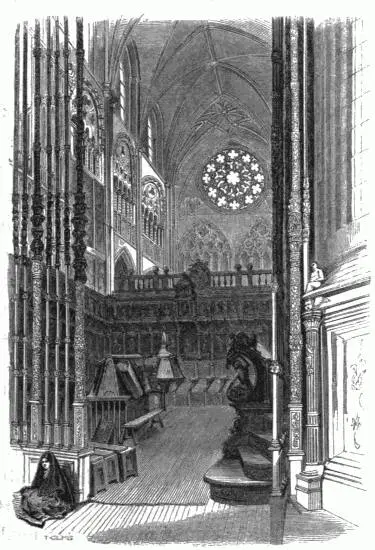
INTERIOR OF THE CHOIR.
His tomb may be seen at the back of the Choir. From the date of the building its style may at once be recognised, allowing for a difference which existed between England and the Continent, the latter being somewhat in advance. The original edifice must have been a very perfect and admirable specimen of the pointed architecture of its time in all its purity. As it is, unfortunately, (as the antiquary would say, and, I should add, the mere man of taste, were it not that tastes are various, and that the proverb says they are all in nature,) the centre of the building, forming the intersection of the transept and nave, owing to some defect in the original construction, fell in just at the period during which regular architecture began to waver, and the style called in France the "Renaissance" was making its appearance. An architect of talent, Felipe de Borgoña, hurried from Toledo, where he was employed in carving the stalls of the choir, to furnish a plan for the centre tower. He, however, only carried the work to half the height of the four cylindrical piers which support it. He was followed by several others before the termination of the work; and Juan de Herrera, the architect of the Escorial, is said to have completed it. In this design are displayed infinite talent and imagination; but the artist could not alter the taste of the age. It is more than probable that he would have kept to the pure style of his model, but for the prevailing fashion of his time. Taken by itself, the tower is, both externally and internally, admirable, from the elegance of its form, and the richness of its details; but it jars with the rest of the building.
Placing this tower in the background, we will now repair to the west front. Here nothing is required to be added, or taken away, to afford the eye a feast as perfect as grace, symmetry, grandeur, and lightness, all combined, are capable of producing. Nothing can exceed the beauty of this front taken as a whole. You have probably seen an excellent view of it in one of Roberts's annuals. The artists of Burgos complain of an alteration, made some fifty years back by the local ecclesiastical authorities, nobody knows for what reason. They caused a magnificent portal to be removed, to make way for a very simple one, totally destitute of the usual sculptured depth of arch within arch, and of the profusion of statuary, which are said to have adorned the original entrance. This, however, has not produced a bad result in the view of the whole front. Commencing by solidity and simplicity at its base, the pile only becomes ornamental at the first story, where rows of small trefoil arches are carved round the buttresses; while in the intermediate spaces are an oriel window in an ornamental arch, and two narrow double arches. The third compartment, where the towers first rise above the body of the church, offers a still richer display of ornament. The two towers are here connected by a screen, which masks the roof, raising the apparent body of the façade an additional story. This screen is very beautiful, being composed of two ogival windows in the richest style, with eight statues occupying the intervals of their lower mullions. A fourth story, equally rich, terminates the towers, on the summits of which are placed the two spires.
These are all that can be wished for the completion of such a whole. They are, I imagine, not only unmatched, but unapproached by any others, in symmetry, lightness, and beauty of design. The spire of Strasburg is the only one I am acquainted with that may be allowed to enter into the comparison. It is much larger, placed at nearly double the elevation, and looks as light as one of these; but the symmetry of its outline is defective, being uneven, and producing the effect of steps. And then it is alone, and the absence of a companion gives the façade an unfinished appearance. For these reasons I prefer the spires of Burgos. Their form is hexagonal; they are entirely hollow, and unsupported internally. The six sides are carved à jour , the design forming nine horizontal divisions, each division presenting a different ornament on each of its six sides. At the termination of these divisions, each pyramid is surrounded near the summit by a projecting gallery with balustrades. These appear to bind and keep together each airy fabric, which, everywhere transparent, looks as though it required some such restraint, to prevent its being instantaneously scattered by the winds.
On examining the interior of one of these spires, it is a subject of surprise that they could have been so constructed as to be durable. Instead of walls, you are surrounded by a succession of little balustrades, one over the other, converging towards the summit. The space enclosed is exposed to all the winds, and the thickness of the stones so slight as to have required their being bound together with iron cramps. At a distance of a mile these spires appear as transparent as nets.
On entering the church by the western doors, the view is interrupted, as is usual in Spain, by a screen, which, crossing the principal nave at the third or fourth pillar, forms the western limit of the choir; the eastern boundary being the west side of the transept, where there is an iron railing. The space between the opposite side of the transept and the apse is the capilla mayor (chief chapel), in which is placed the high altar. There are two lower lateral naves, from east to west, and beyond them a series of chapels. The transept has no lateral naves. Some of the chapels are richly ornamented. The first or westernmost, on the north side, in particular, would be in itself a magnificent church. It is called the "Chapel of Santa Tecla." Its dimensions are ninety-six feet in length, by sixty-three in width, and sixty high. The ceiling, and different altars, are covered with a dazzling profusion of gilded sculpture. The ceiling, in particular, is entirely hidden beneath the innumerable figures and ornaments of every sort of form, although of questionable taste, which the ravings of the extravagant style, called in Spain "Churriguesco" (after the architect who brought it into fashion), could invent.
The next chapel—that of Santa Ana—is not so large, but designed in far better taste. It is Gothic, and dates from the fifteenth century. Here are some beautiful tombs, particularly that of the founder of the chapel. But the most attractive object is a picture, placed at an elevation which renders difficult the appreciation of its merits without the aid of a glass,—a Holy Family, by Andrea del Sarto. It is an admirable picture; possessing all the grace and simplicity, combined with the fineness of execution, of that artist. The chapel immediately opposite (on the south side) contains some handsome tombs, and another picture, representing the Virgin, attributed by the cicerone of the place to Michael Angelo. We next arrive at the newer part, or centre of the building, where four cylindrical piers of about twelve feet diameter, with octagonal bases, form a quadrangle, and support the centre tower, designed by Felipe de Borgoña. These pillars are connected with each other by magnificent wrought brass railings, which give entrance respectively, westward to the choir,—on the east to the sanctuary, or capilla mayor,—and north and south to the two ends of the transept. Above is seen the interior of the tower, covered with a profusion of ornament, but discordant with every other object within view.
Читать дальшеИнтервал:
Закладка:
Похожие книги на «The Picturesque Antiquities of Spain»
Представляем Вашему вниманию похожие книги на «The Picturesque Antiquities of Spain» списком для выбора. Мы отобрали схожую по названию и смыслу литературу в надежде предоставить читателям больше вариантов отыскать новые, интересные, ещё непрочитанные произведения.
Обсуждение, отзывы о книге «The Picturesque Antiquities of Spain» и просто собственные мнения читателей. Оставьте ваши комментарии, напишите, что Вы думаете о произведении, его смысле или главных героях. Укажите что конкретно понравилось, а что нет, и почему Вы так считаете.
